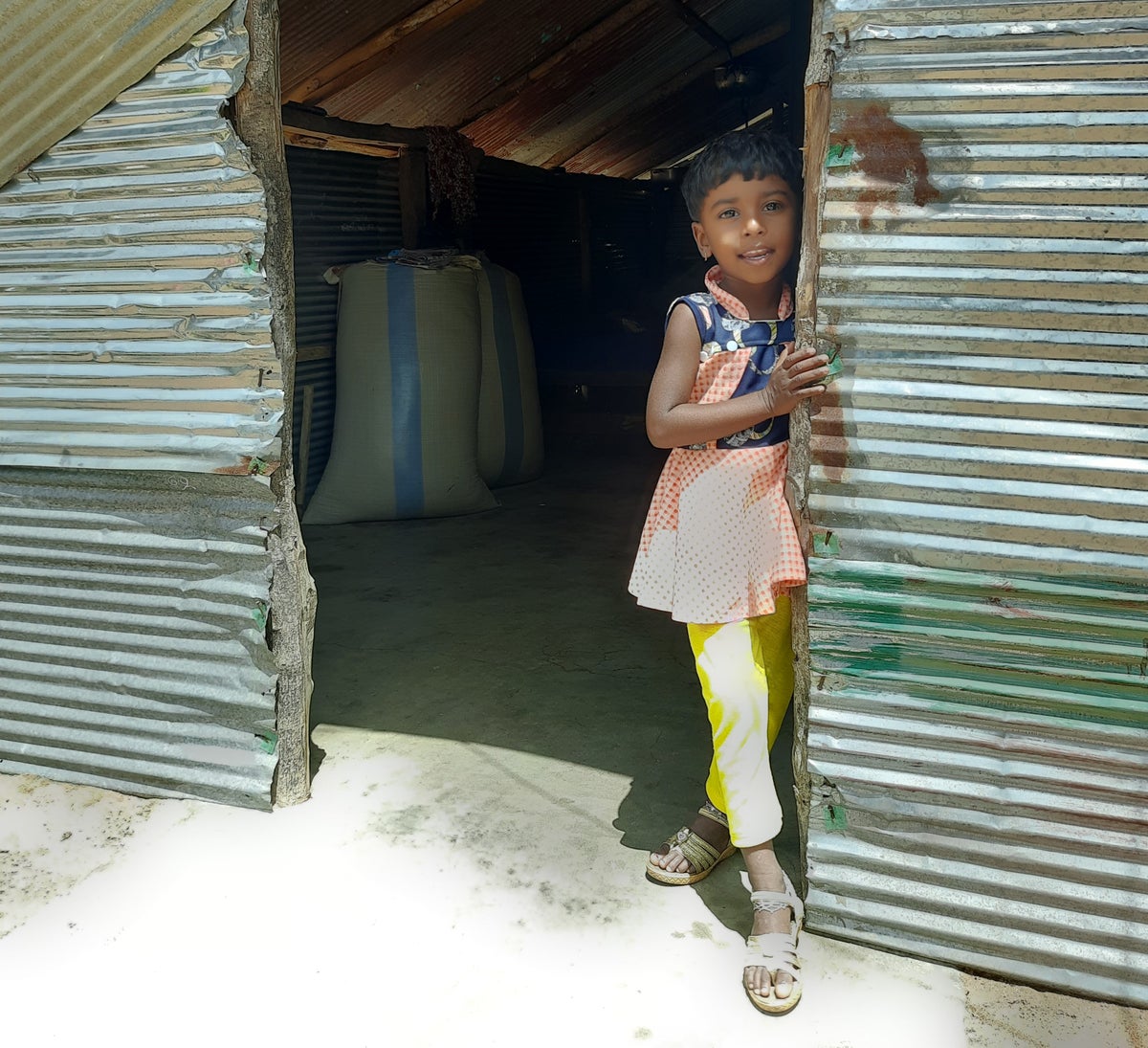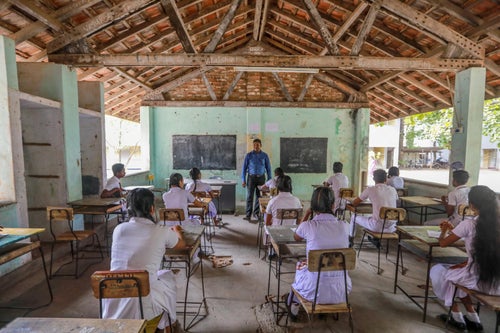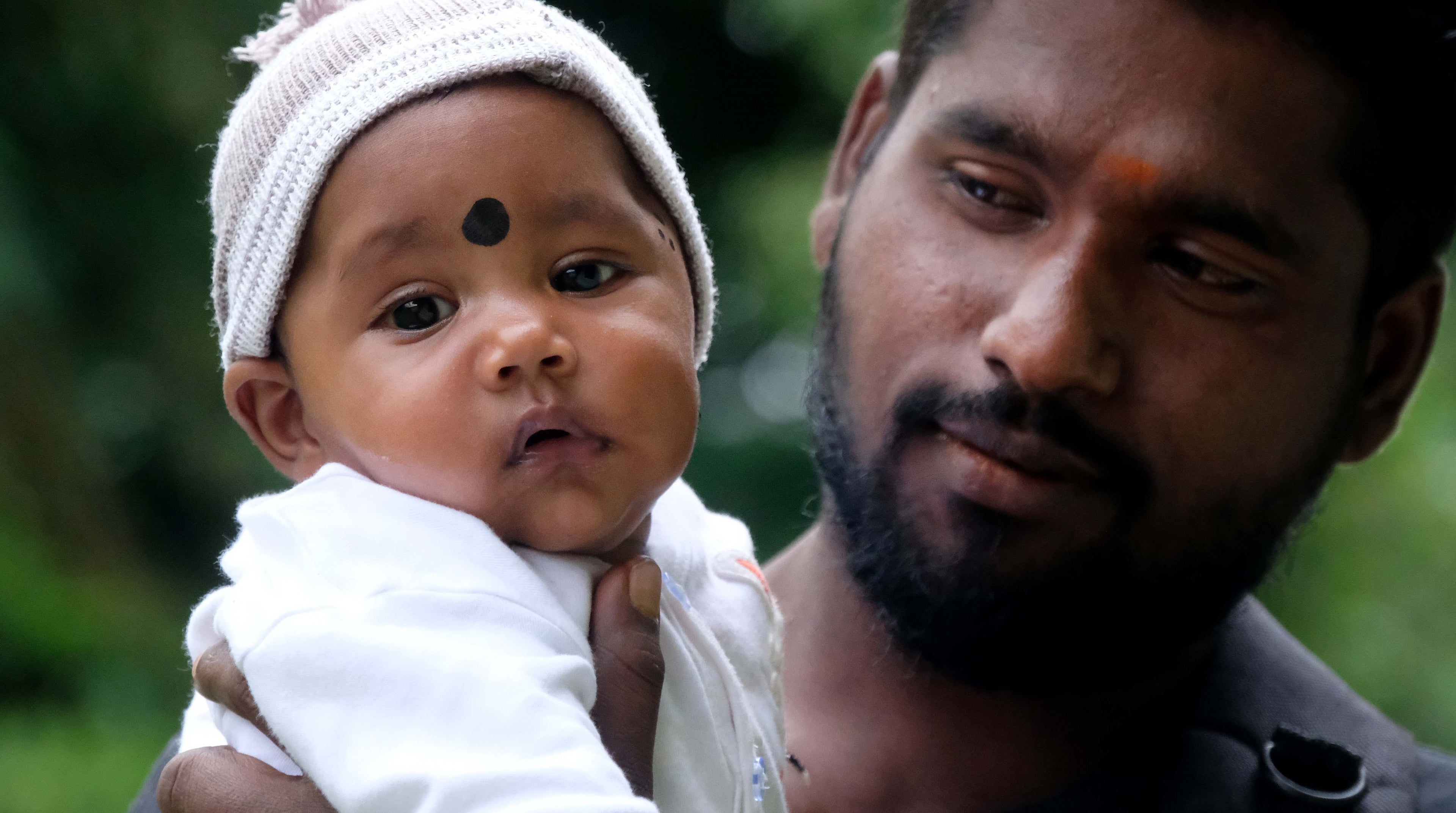Children and families across Sri Lanka are still feeling the devastating impacts of the country’s prolonged economic crisis.
While there has been some improvement to the economic situation, families across the country are struggling to make ends meet, with worrying consequences for children.
After more than a year of economic hardship, many families have exhausted any savings they once had, and with social systems stretched to their limit, help is hard to find. In this challenging environment, families are having to make impossible financial decisions to care for their children and one in five children under five is malnourished.
28%
28 per cent of people are food insecure.
56,000
children under five have severe acute malnutrition and need urgent treatment.
Help Children in Sri Lanka
The needs of children and families in Sri Lanka remain as acute as ever.
"More than a year after the crisis began, an alarming 2.3 million children need humanitarian assistance. UNICEF remains in Sri Lanka to provide services and support, and to help Sri Lanka build back better, so these children are not forgotten or left behind."
UNICEF is working with the government of Sri Lanka and our community-based partners to provide health, education and nutrition support to children and families who need it.

Three-year-old Kaveena was diagnosed with severe acute malnutrition early last year. While her parents were doing everything they could to take the best care for their young daughter, the cost of living and the economic crisis meant they were not always able to provide her with the most nutritious food.
“Our income reduced a lot last year and we are unable to buy good quality food,” adds her father Mahesan (30) who is a day-wage earning labourer. “Our efforts to gain other sources of income has also been futile.”
When Kaveena was referred to hospital for treatment, her parents worried that they may not be able to afford it. For families like Kaveena’s, the cost of public transport to a hospital or losing a day of pay can tip them over the edge, preventing them from being able to access treatment for their child.
Thanks to a UNICEF-supported nutrition program, Kaveena’s parents were not only able to access the treatment they needed for their daughter but money to cover the costs of transport to a UNICEF-supported malnutrition outreach clinic. With treatment, Kaveena’s weight is gaining gradually and she is on the path to recovery.
“Thanks to the outreach clinic we are able to see a gradual improvement. Kaveena is gaining weight and is active. The support for transport and daily expense helps us access these clinics without fail,” said Kaveena’s parents.
Help Children in Sri Lanka
The needs of children and families in Sri Lanka remain as acute as ever.
UNICEF is working with communities and families to prevent malnutrition in children, and we are working to treat children who are suffering from the condition. This includes developing an innovative, new treatment for severe acute malnutrition – the worst form of malnutrition, which impacts three per cent of children across Sri Lanka.

A new treatment for severe acute malnutrition
UNICEF is working with the Sri Lankan Ministry of Health to develop a new, locally manufactured Ready-To-Use Therapeutic Food (RUTF) that will improve access to malnutrition treatment for children for many years to come
RUTF are energy dense medicinal pastes or biscuits that can restore the health of a severely malnourished child in six-to-eight-weeks. RUTF don’t need to be refrigerated or mixed with potentially contaminated water, and children can be treated at home instead of in clinics or hospitals.
Right now, RUTF are imported into Sri Lanka. Wait times can be lengthy and the cost of treatment is high. The UNICEF-supported, locally-manufactured product will reduce the cost of treatment – meaning more children can be reached – and minimise wait times for families. It will create local jobs, reduce transport emissions, and will be tailored to the tastes of Sri Lankan Children, using local ingredients such as rice, coconut and kithul.
How will my donation help support children in Sri Lanka?
Your donation can help to save lives
$39 can provide one months’ worth of micronutrient powder for 35 children aged 6-24 months.
$74 can purchase one carton of ready to use therapeutic food to treat a child for severe acute malnutrition.
$92 can provide 10 months’ worth of food vouchers to a pregnant or breastfeeding mother.
How do we use each dollar donated?

- 80¢on average, 80 cents to every dollar spent for the past three years went directly to helping children in need, including long-term programs, emergency response and community education.
- 14¢on average, 14 cents to every dollar spent for the past three years went to essential fundraising costs that helped us generate more impact for children.
- 6¢on average, 6 cents to every dollar spent for the past three years went towards our admin costs, such as keeping your personal data safe.
How do we use each dollar donated?

Philanthropic Donations
You can help us reach entire communities by making a philanthropic donation.

Help Children in Sri Lanka
The needs of children and families in Sri Lanka remain as acute as ever.





